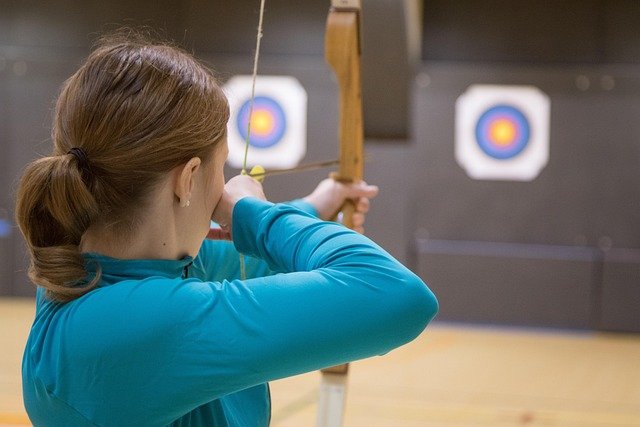Competitive Stair Climbing: The Vertical Sprint Revolution
In a world where traditional sports often dominate headlines, a new athletic discipline is rapidly ascending to prominence. Competitive stair climbing, once relegated to the realm of firefighter training and novelty races, has evolved into a serious sport that challenges athletes in ways few other activities can. This vertical sprint revolution is redefining endurance, strength, and mental fortitude, attracting a diverse array of competitors and captivating audiences worldwide.

The Origins of Competitive Stair Climbing
Competitive stair climbing, also known as tower running or vertical racing, has roots that stretch back further than many might expect. While the sport as we know it today began to take shape in the late 20th century, the concept of racing up stairs for sport or challenge has a much longer history.
In ancient civilizations, stairs played a significant role in religious and cultural practices. The Mayans and Aztecs, for instance, built massive pyramid temples with steep staircases that were climbed as part of rituals and ceremonies. While not competitive in nature, these climbs laid the groundwork for the idea of ascending great heights on foot as a test of physical and mental strength.
The modern incarnation of competitive stair climbing can be traced back to the early 1900s. One of the earliest recorded stair climbing races took place in 1905 at the Eiffel Tower in Paris. Participants raced up the 1,710 steps to the third level of the iconic structure, setting the stage for future vertical challenges.
However, it wasn’t until the 1970s that the sport began to gain significant traction. The Empire State Building Run-Up, first held in 1978, is widely considered the event that propelled competitive stair climbing into the public consciousness. This race, which continues to this day, challenges participants to climb 1,576 steps over 86 floors to reach the observation deck of one of the world’s most famous skyscrapers.
As urban landscapes evolved and skyscrapers became more prevalent, the number of potential venues for stair climbing competitions increased. Throughout the 1980s and 1990s, races began popping up in major cities around the world, from Chicago’s Willis Tower (formerly Sears Tower) to Sydney’s Centrepoint Tower.
The sport’s growth was further accelerated by the formation of the Towerrunning World Association (TWA) in 2009. This governing body helped standardize rules, create a global ranking system, and promote the sport internationally. Today, the TWA oversees hundreds of events worldwide, ranging from local races in office buildings to prestigious international competitions in some of the world’s tallest structures.
As competitive stair climbing has evolved, so too have the athletes who participate in it. What began as a niche activity primarily undertaken by firefighters and fitness enthusiasts has now attracted elite athletes from various disciplines, including marathon runners, cyclists, and triathletes. The unique demands of the sport have led to the emergence of specialized training techniques and strategies, further cementing its status as a legitimate athletic pursuit.
The Physical Demands of Vertical Racing
Competitive stair climbing is a sport that pushes the human body to its limits, demanding a unique combination of cardiovascular endurance, muscular strength, and mental toughness. Unlike many traditional endurance sports that involve horizontal movement, stair climbing requires athletes to work against gravity continuously, creating a set of physical challenges that are unparalleled in the world of athletics.
At its core, stair climbing is an anaerobic activity. The intense, repetitive motion of ascending stairs rapidly depletes the body’s oxygen supplies, forcing muscles to work in oxygen-deprived conditions. This leads to the rapid buildup of lactic acid, causing the burning sensation that stair climbers often describe in their legs and lungs.
The quadriceps, the large muscles at the front of the thighs, bear the brunt of the work in stair climbing. These muscles are responsible for extending the knee and propelling the body upward with each step. The glutes and calves also play crucial roles, providing additional power and stability. The repetitive nature of the movement means these muscle groups are under constant strain throughout a race, leading to rapid fatigue.
Upper body strength, while not as immediately obvious, is also vital in competitive stair climbing. Many athletes use the handrails to pull themselves up, reducing some of the load on their legs and improving their overall speed. This technique engages the biceps, triceps, and back muscles, making stair climbing a full-body workout.
The cardiovascular system is pushed to its limits during a stair climbing race. The heart rate quickly rises to near-maximum levels and stays there for the duration of the climb. This sustained cardiovascular stress improves heart health and lung capacity over time, making stair climbers some of the fittest athletes in any sport.
Balance and coordination are also critical components of successful stair climbing. As fatigue sets in, maintaining proper form and foot placement becomes increasingly challenging. Athletes must develop a rhythm and efficiency in their movement to minimize energy expenditure and maintain speed throughout the climb.
The energy systems used in stair climbing are complex and varied. While the anaerobic system dominates in shorter climbs, longer races require a careful balance between anaerobic and aerobic energy production. Elite stair climbers must train their bodies to efficiently switch between these systems to maintain performance over extended climbs.
One of the unique aspects of stair climbing is the constant eccentric muscle contractions involved. As the leg extends to push the body upward, the muscles must also control the descent of the opposite leg onto the next step. This eccentric loading can lead to significant muscle damage and soreness, particularly in individuals not accustomed to the movement.
The physical demands of stair climbing extend beyond the race itself. Recovery is a crucial aspect of the sport, as the intense nature of the activity can lead to prolonged muscle soreness and fatigue. Proper nutrition, hydration, and recovery techniques are essential for athletes to maintain consistent performance and avoid injury.
As the sport has evolved, so too has our understanding of the physical adaptations required for success. Elite stair climbers often exhibit a unique physiological profile, combining the leg strength of sprinters with the cardiovascular capacity of long-distance runners. This hybrid athleticism makes competitive stair climbing a fascinating subject for sports scientists and physiologists studying the limits of human performance.
Training Techniques for Vertical Success
Preparing for the unique demands of competitive stair climbing requires a multifaceted approach to training. Athletes must develop not only the physical capabilities to ascend thousands of stairs at high speed but also the mental fortitude to push through the intense discomfort that comes with the sport. Here, we explore some of the key training techniques employed by elite stair climbers to achieve vertical success.
Stair-specific training is, unsurprisingly, at the core of any competitive stair climber’s regimen. However, finding suitable training venues can be challenging. Many athletes resort to using office buildings, parking garages, or stadium stairs for their workouts. These sessions typically involve repeated climbs of varying intensities, from all-out sprints to more measured, endurance-focused ascents.
Interval training plays a crucial role in preparing for the anaerobic demands of stair climbing. Athletes often incorporate high-intensity interval training (HIIT) into their routines, both on stairs and on other equipment like treadmills set to maximum incline. These workouts help improve lactate threshold and anaerobic capacity, allowing climbers to maintain higher intensities for longer periods.
Strength training is essential for building the muscular endurance required for prolonged climbs. Exercises that target the quadriceps, glutes, and calves are particularly important. Squats, lunges, and calf raises are staples in most stair climbers’ weight room routines. Plyometric exercises like box jumps and jump squats are also popular for developing explosive power.
Upper body and core strength shouldn’t be neglected. Many stair climbers incorporate pull-ups, rows, and various core exercises into their training to improve their ability to use handrails effectively and maintain proper posture throughout a climb.
Cardiovascular conditioning beyond stair climbing is also crucial. Many competitive stair climbers cross-train with activities like running, cycling, or swimming to build overall endurance and maintain cardiovascular health. These activities also provide a mental break from the intense focus required in stair-specific training.
Technique drills are an often-overlooked aspect of stair climbing training. Efficient foot placement, arm movement, and body positioning can significantly impact performance. Many athletes practice these techniques on smaller sets of stairs before applying them to longer climbs.
Mental preparation is as important as physical training in competitive stair climbing. The ability to push through pain and maintain focus in a claustrophobic stairwell is crucial for success. Many athletes incorporate visualization techniques and mindfulness practices into their training to improve their mental resilience.
Nutrition and recovery strategies play a vital role in supporting the intense training required for competitive stair climbing. A diet high in complex carbohydrates and lean proteins helps fuel workouts and aid in recovery. Proper hydration is also critical, especially given the potential for significant fluid loss during intense climbs.
As the sport has grown, so too has the sophistication of training techniques. Some elite athletes now use advanced technologies like altitude training masks to simulate the oxygen-deprived conditions of a stair climb. Others employ wearable technology to closely monitor their physiological responses during training and optimize their performance.
Periodization, the systematic planning of athletic training, is widely used in competitive stair climbing. Athletes typically structure their training around key events, with phases focusing on building base fitness, developing specific stair climbing capabilities, and tapering for peak performance.
Injury prevention is a key consideration in training for stair climbing. The repetitive nature of the sport can lead to overuse injuries, particularly in the knees and ankles. Many athletes incorporate stability exercises and flexibility work into their routines to mitigate these risks.
As competitive stair climbing continues to evolve, so too will the training methods employed by its athletes. The unique demands of the sport provide a fertile ground for innovation in training techniques, making it an exciting field for coaches, athletes, and sports scientists alike.
The Global Stair Climbing Community
The world of competitive stair climbing, while still relatively niche compared to mainstream sports, has fostered a vibrant and passionate global community. This unique subculture of athletics brings together individuals from diverse backgrounds, united by their shared love of vertical challenges and the camaraderie that comes with pushing oneself to new heights—literally and figuratively.
At the heart of this community are the numerous stair climbing events held around the world. These range from local races in office buildings to prestigious international competitions in iconic skyscrapers. The Towerrunning World Association (TWA) currently recognizes over 200 races across more than 40 countries, testament to the sport’s global reach.
One of the most celebrated events in the stair climbing calendar is the Vertical World Circuit (VWC), a series of races held in some of the world’s most famous skyscrapers. Cities like New York, London, Paris, and Shanghai host legs of this circuit, attracting elite climbers from around the globe. The variety of buildings and the prestige associated with these events make the VWC a true test of versatility and skill in the stair climbing world.
Beyond organized competitions, the stair climbing community has given rise to numerous unofficial challenges and records. From setting fastest known times (FKTs) on famous staircases to creating multi-tower challenges in cities with multiple skyscrapers, enthusiasts continually find new ways to test their limits and engage with the sport.
Social media and online forums have played a crucial role in connecting stair climbers across geographical boundaries. Platforms like Facebook and Instagram host numerous groups and pages dedicated to the sport, where athletes share training tips, race reports, and words of encouragement. These online communities have been instrumental in growing the sport, particularly in regions where organized events are less common.
The inclusive nature of stair climbing is one of its most appealing aspects. While elite athletes compete for top honors, many events welcome participants of all fitness levels. It’s not uncommon to see professional athletes racing alongside weekend warriors and charity fundraisers in the same event. This inclusivity has helped foster a supportive and encouraging atmosphere within the community.
Charity has become an integral part of many stair climbing events. Races often partner with organizations supporting causes such as lung health, firefighter welfare, and various medical research initiatives. These partnerships not only raise funds for worthy causes but also provide additional motivation for participants who climb for more than just personal achievement.
The stair climbing community has also developed its own unique culture and traditions. Many climbers collect race bibs or T-shirts from different events, creating personal museums of their vertical conquests. Some events have developed quirky traditions, like the “Plunge” at the end of the Empire State Building Run-Up, where finishers dive onto mats to signal the completion of their climb.
Education and outreach efforts are ongoing within the community to promote the sport and attract new participants. Many experienced climbers volunteer their time to mentor newcomers, organize training groups, or give presentations about the sport at fitness expos and community events.
As the sport grows, so too does the level of professionalism surrounding it. While most stair climbers are amateurs, a small but growing number of athletes are able to make a living from the sport through a combination of prize money, sponsorships, and related activities like coaching or writing about stair climbing.
The global nature of the stair climbing community has led to fascinating cultural exchanges. Athletes traveling to international events often take the opportunity to explore local cultures and form friendships that span continents. These connections have led to collaborative training camps, exchange programs, and even stair climbing tourism, where enthusiasts plan vacations around the opportunity to climb famous staircases or participate in renowned events.
Looking to the future, the stair climbing community continues to evolve and expand. Efforts are underway to standardize rules and regulations across different events, potentially paving the way for greater recognition from mainstream sporting bodies. There’s also growing interest in developing youth programs to introduce the next generation to the joys and challenges of vertical racing.
The global stair climbing community, with its blend of competitiveness and camaraderie, stands as a testament to the unifying power of sport. As urban environments continue to grow vertically, it’s likely that this community will only continue to expand, bringing more people together in the shared pursuit of conquering gravity, one step at a time.
The Future of Vertical Racing
As competitive stair climbing continues to gain recognition and popularity, the future of this unique sport appears bright and full of potential. The evolution of vertical racing is likely to be shaped by a combination of technological advancements, expanding global participation, and increasing mainstream recognition.
One of the most exciting prospects for the future of stair climbing is the integration of advanced technology. Wearable devices that can accurately track an athlete’s performance throughout a climb are becoming more sophisticated. These devices can monitor heart rate, oxygen saturation, and even muscle fatigue in real-time, providing valuable data for both training and competition. In the future, we may see this data incorporated into live broadcasts, giving spectators unprecedented insight into the physiological demands of the sport.
Virtual and augmented reality technologies also hold promise for the future of stair climbing. Virtual races could allow competitors from around the world to race against each other in simulated environments, potentially expanding participation beyond the limitations of physical events. Augmented reality could enhance the spectator experience, overlaying performance data and race information onto live views of the climb.
The construction of purpose-built stair climbing venues is another potential development. While the sport currently relies on existing structures, dedicated facilities could offer controlled environments for training and competition. These venues could incorporate features like adjustable step heights, varying gradients, and even altitude simulation to create diverse and challenging courses.
As urban environments continue to evolve, new skyscrapers and architectural marvels will provide fresh challenges for stair climbers. The sport may expand to include more diverse types of structures, from ancient monuments to modern architectural wonders, creating a more varied and globally representative competitive landscape.
The growing awareness of the health benefits of stair climbing could lead to increased mainstream recognition and participation. As sedentary lifestyles and their associated health risks become more prevalent, stair climbing’s effectiveness as a high-intensity, low-impact workout could see it promoted more widely as a public health initiative. This could result in more corporate wellness programs incorporating stair climbing challenges and an increase in public access to stairs in buildings for training purposes.
Environmental consciousness may also play a role in shaping the future of the sport. Stair climbing events have a relatively low environmental impact compared to many other sports, requiring minimal equipment and utilizing existing structures. As sustainability becomes an increasingly important consideration in sports, this could work in favor of stair climbing’s growth and acceptance.
The potential for stair climbing to become an Olympic sport is a topic of discussion within the community. While this remains a long-term aspiration, the increasing standardization of rules and the sport’s growing global presence are steps in the right direction. The inclusion of sport climbing in the 2020 Tokyo Olympics (held in 2021) may pave the way for other vertical sports to be considered in the future.
Advancements in sports science specific to stair climbing are likely to drive improvements in performance and training methods. As researchers delve deeper into the unique physiological demands of the sport, we may see the emergence of highly specialized training regimens and performance optimization strategies.
The commercialization of the sport is another area poised for growth. As stair climbing gains more mainstream attention, opportunities for sponsorship, media coverage, and professional athletes are likely to increase. This could lead to the development of professional leagues and more lucrative competitive circuits.
Education and youth development programs focused on stair climbing may become more prevalent. Introducing the sport to younger athletes could help build a strong base of participants and supporters for the future, ensuring the long-term sustainability of competitive stair climbing.
International collaboration in the





